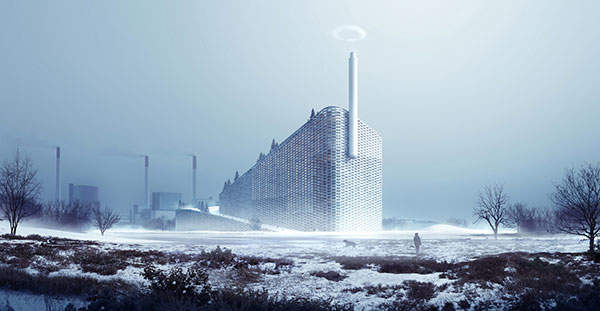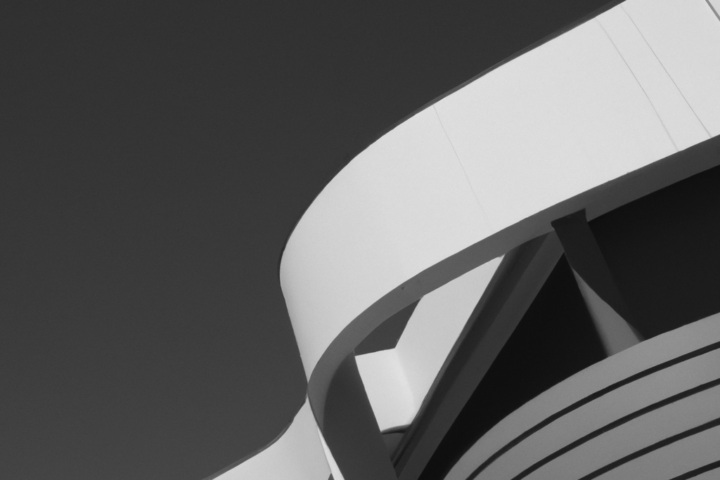
Breaking Boundaries
Exploring Emerging Trends in Contemporary Architecture
Contemporary architecture explores the unseen and untold Faces of Design. Asymmetrical lines and enormous volumes appear throughout the geometry of design and building, almost as if David Hilbert was handed a blueprint layout and went to work designing.
Buildings from the early twentieth century to the present day are very different. Each pattern, each brick laid, is distinct and unique. Thanks to today’s influx of architects, novel viewpoints are being introduced to the streets of major cities, with some projects bursting with more charm than the last.
Trends and Innovations in Contemporary Architecture
Let’s take a walk down memory lane, OPEC in 1973 completely changed the financial game of the oil world. Leading countries that were buying oil from KSA, ended up having to make tough decisions and face inflation. At this time, a brilliant pioneer and engineer, Dr. Berman invented the first photovoltaic (PV) solar cell, and this changed the trend and laid the building foundation of contemporary architecture.
The reason I say this is because, without the PV cell, it would’ve taken architecture a whole lot longer to begin its course and journey into contemporary architecture. R. Buckminster Fuller decided to showcase the impact of solar energy in sustainable architecture in 1977, by building the Solar Energy Pavilion for the Expo ’67 world fair. This paved the way for further experimentation and adoption of sustainability in architecture.
Environmental Awareness and Sustainability
Sustainable architecture or eco-architecture is a green architecture that serves minimal resource consumption, and crafts healthy and energy-efficient spaces for occupants. The key principle of eco-architecture is to change the entire process of a building’s lifecycle. From site selection to demolition, environmentally responsible strategies are put into play when deciding just how much a building can optimize on sustainability.
The way architects today follow and form a footprint in today’s environment-forward world, is by changing the game and innovating newer methods to implement today. Proper orientation of a building possibly is the most important strategy used by architects today. Changing this simple technique reduces solar heat gain in summers, and maximizes it in winters. Natural ventilation is another, although this method has been used since rural times, in today’s architecture, it made a comeback for the good. Buildings designs with operable windows, vents, and building configurations that provide cooling without mechanical systems have proved itself the best possible HVAC rule. Other strategies like Daylighting, Thermal Mass, Shading Devices, and Natural Landscaping, some among the plethora of strategies used today, are effective and extremely useful for responsible architecture.
In 2024, sustainable architecture continues to gain momentum globally as architects, developers, and policymakers increasingly prioritize environmental sustainability and resilience in building design and construction. There is a growing emphasis on energy efficiency, renewable energy integration, and green building certifications in new construction and retrofit projects. Even I opted to learn the sustainable ways of architecture to make an impact on today’s world.
Sustainability and Social Impact
Babylonians had cracked the code for sustainable architecture back in the Bronze Age. They created something called a Ziggurat, and not just them, but many ancient civilizations used this architectural structure for their temples. They used thick mud brick walls and stepped terraces to provide maximum passive cooling for their hot climate. Their brilliant idea of flat terraces stored and harvested rainwater, and they were smart and local when selecting their materials. Mud bricks were sun-dried which reduced energy consumption even back then. Some might say, that if we wanted, the Digital age could learn from the Bronze Age and save the planet. The legacy of ziggurats highlights the enduring importance of integrating environmental, social, and cultural considerations in architectural practice, reflecting a holistic approach to sustainability that transcends time and place.

The late 20th century saw the development of green building standards and certification programs like LEED and BREEAM which set benchmarks for sustainable building practices. Today, you can’t make a building without having either of these certificates. In my opinion, these certifications have provided us with an improved quality of life. Sustainable designs are designed to enhance the life ofoccupants andnd provide equitable access to resources. It provides Affordable housing and social equity, as well as community resilience and adaptation. Overall, sustainable architecture has a profound social impact by promoting healthier, more equitable, and resilient communities through environmentally responsible design practices that prioritize human well-being, community engagement, and social equity.
Future Directions and Initiatives
At the rate the world is advancing, expecting that climate change is only going to get worse, is an understatement. To battle this, Architectural firms like the Heatherwick Studio ithe n UK, BIG in Denmark, and Foster are just some of the collectives of the many that are engaged in building a sustainable future. We’ll come to their work in a bit, but first, what are the future directions we need?
- Advancements in technology
Continued advancements in technology, including artificial intelligence, advanced materials, and digital design tools, will revolutionize sustainable architecture by enabling more efficient building systems, smarter energy management, and innovative construction techniques - Biophilic Design
The integration of biophilic design principles, which incorporate natural elements and patterns into the built environment to enhance human well-being, will become increasingly prevalent in sustainable architecture, promoting connections with nature and improving occupant health and productivity. - Circular Economy
The adoption of circular economy principles, which prioritize the reuse, recycling, and repurposing of materials and resources throughout the building lifecycle, will drive a shift towards more regenerative and resource-efficient building practices, reducing waste and environmental impact. - Net-Zero and Positive Energy Buildings
The widespread adoption of net-zero energy and positive energy building standards will accelerate, with buildings producing as much or more energy than they consume, leading to a significant reduction in greenhouse gas emissions and fossil fuel dependency in the built environment. - Resilient and Adaptive Design
The design of resilient and adaptive buildings and urban infrastructure, capable of withstanding and adapting to the impacts of climate change, extreme weather events, and other environmental challenges, will become essential in creating sustainable and climate-resilient communities. - Social Equity and Inclusivity
There will be a growing emphasis on social equity and inclusivity in sustainable architecture, with a focus on designing inclusive, accessible, and culturally responsive spaces that address the needs of diverse communities and promote social cohesion and well-being.
Upcoming Projects to be Excited About
The Amager Bakke Waste-to-Energy Plant, Denmark

Copenhill is a groundbreaking waste-to-energy plant that doubles as a recreational facility, featuring a ski slope, hiking trails, and a climbing wall on its exterior. The project exemplifies BIG’s commitment to sustainable design by transforming an industrial facility into a green landmark that promotes environmental awareness and community engagement.
The Bloomberg European Headquartes , London
The Bloomberg European Headquarters is a state-of-the-art office building designed to achieve high standards of sustainability and energy efficiency. The project incorporates innovative design features such as natural ventilation, energy-efficient lighting, and advanced building management systems to reduce energy consumption and carbon emissions.
The Eden Project in Cornwall, UK.
The Eden Project is a groundbreaking ecological park housed within a series of large-scale geodesic domes, or “biomes,” constructed from recycled materials. The project showcases Heatherwick Studio’s innovative approach to sustainable design and celebrates biodiversity, environmental education, and community engagement.
Challenges
These architects and firms are at the forefront of sustainable architecture, leading by example through their commitment to creating environmentally responsible, socially inclusive, and resilient built environments that address the pressing challenges of the 21st century. But what are the challenges of the 21st century?
- Cost and Affordability: The upfront costs associated with sustainable building materials, technologies, and design strategies can pose challenges for developers and homeowners, limiting the widespread adoption of sustainable architecture, particularly in economically disadvantaged communities.
- Regulatory and Policy Barriers: Inadequate or inconsistent regulations, zoning codes, and building standards related to sustainability can hinder the implementation of sustainable design practices and technologies, requiring policy changes and government incentives to overcome regulatory barriers.
- Resource Scarcity: The availability and affordability of sustainable building materials, such as recycled materials and renewable resources, may be limited, particularly in regions with resource scarcity or high demand, posing challenges for achieving sustainable construction practices at scale.
- Technological Limitations: The integration of advanced technologies and innovative design strategies into sustainable architecture may face challenges related to technological limitations, compatibility issues, and the need for specialized expertise, requiring ongoing research and development to overcome technical barriers.
- Behavioural Change and Awareness: Promoting sustainable behaviours and raising awareness about the importance of sustainability in architecture among designers, builders, policymakers, and the general public remains a significant challenge, requiring education, outreach, and community engagement efforts to foster a culture of sustainability.
- Globalization and Urbanization: Rapid urbanization and globalization trends can exacerbate environmental degradation, resource consumption, and social inequalities, posing challenges for sustainable urban development and requiring holistic, integrated approaches to address complex urban sustainability issues.
Addressing these future directions and challenges will require collaboration and innovation across disciplines, industries, and sectors to advance sustainable architecture and create more resilient, inclusive, and environmentally responsible built environments for future generations.
Conclusion
In wrapping up our journey through the vast landscape of contemporary architecture, let’s take a moment to envision the future—a future where buildings not only stand tall but stand for something greater. Picture this: a bustling metropolis where skyscrapers are not just monuments of concrete and steel but thriving ecosystems, bustling with life and buzzing with energy. Imagine walking through streets lined with vertical gardens and green roofs, where every step you take leaves a smaller carbon footprint and every breath you take fills your lungs with fresh, clean air.
But let’s not forget where it all began. Millennia ago, our ancestors laid the groundwork for sustainable architecture with their ingenious designs and resourceful use of natural materials. From the ziggurats of ancient Mesopotamia to the mud-brick dwellings of the Babylonians, our forebears understood the importance of living in harmony with nature. And now, as we stand on the cusp of a new era, it’s our turn to carry the torch forward and build upon their legacy.
Of course, the road ahead won’t be without its challenges. We’ll need to navigate the maze of regulatory barriers, scale the peaks of technological limitations, and weather the storms of resource scarcity. But with creativity, collaboration, and a healthy dose of stress, we can overcome any obstacle that stands in our way. So, let’s roll up our sleeves, put on our thinking caps, and get ready to shape the future of architecture—one green building at a time.




One Comment
Abhinav Solanki
Biophilic design is truly the future of contemporary architecture, I completely agree